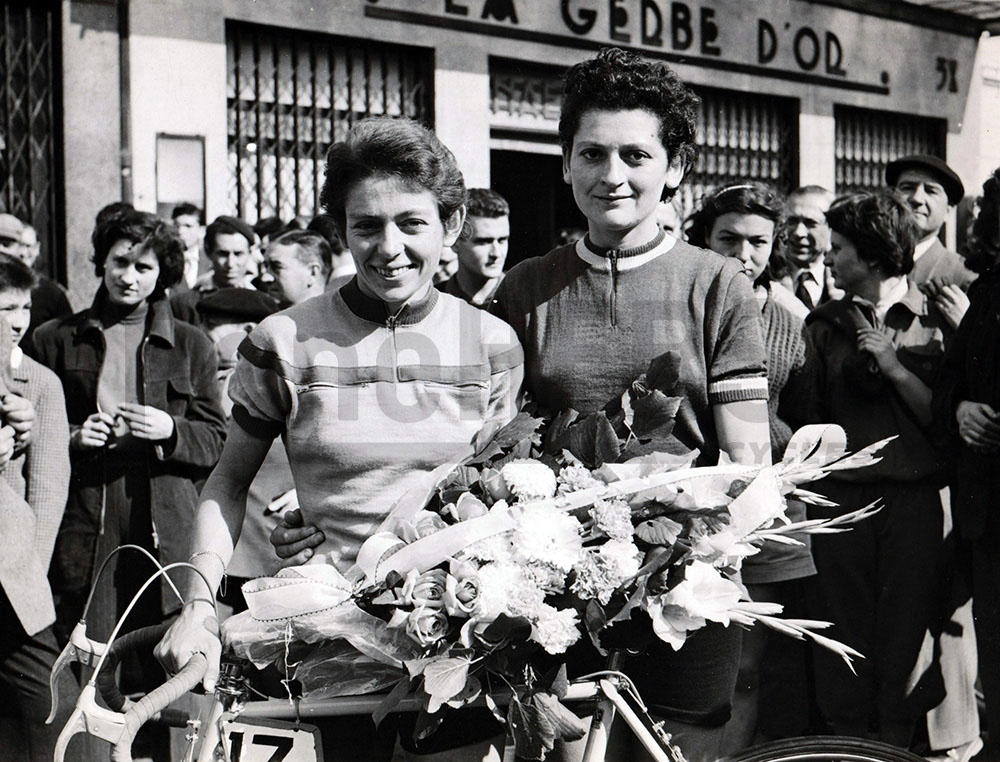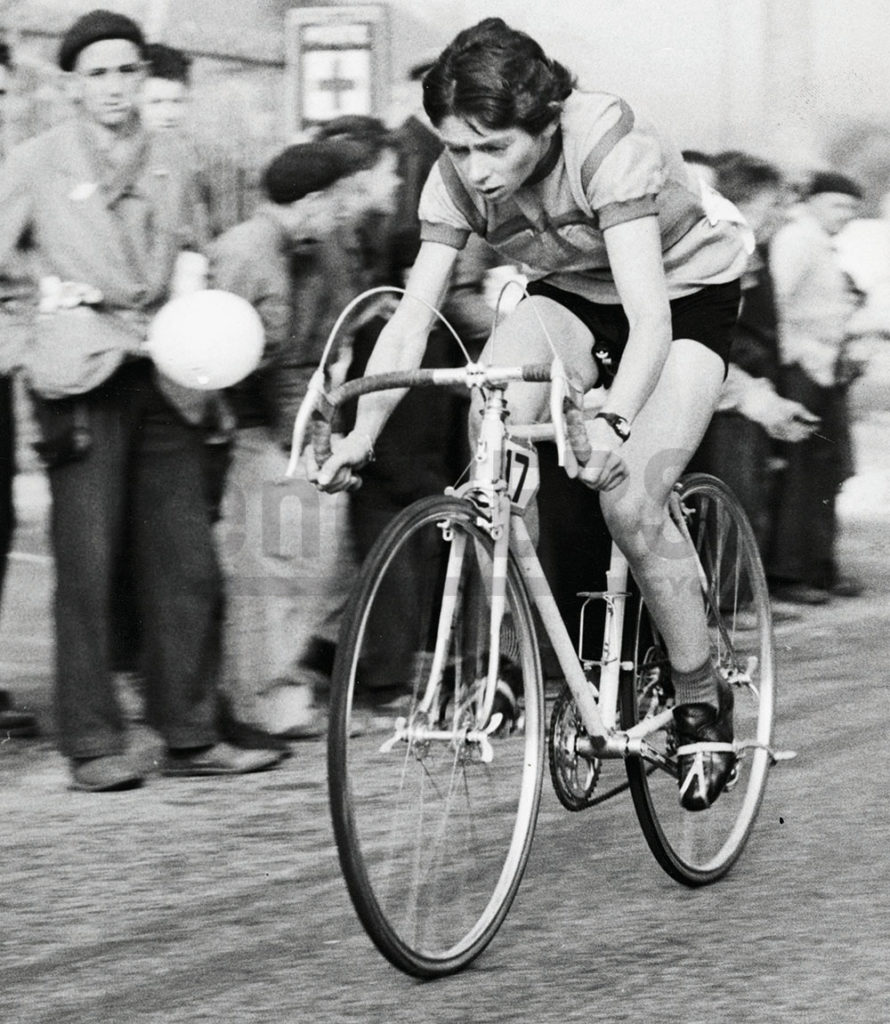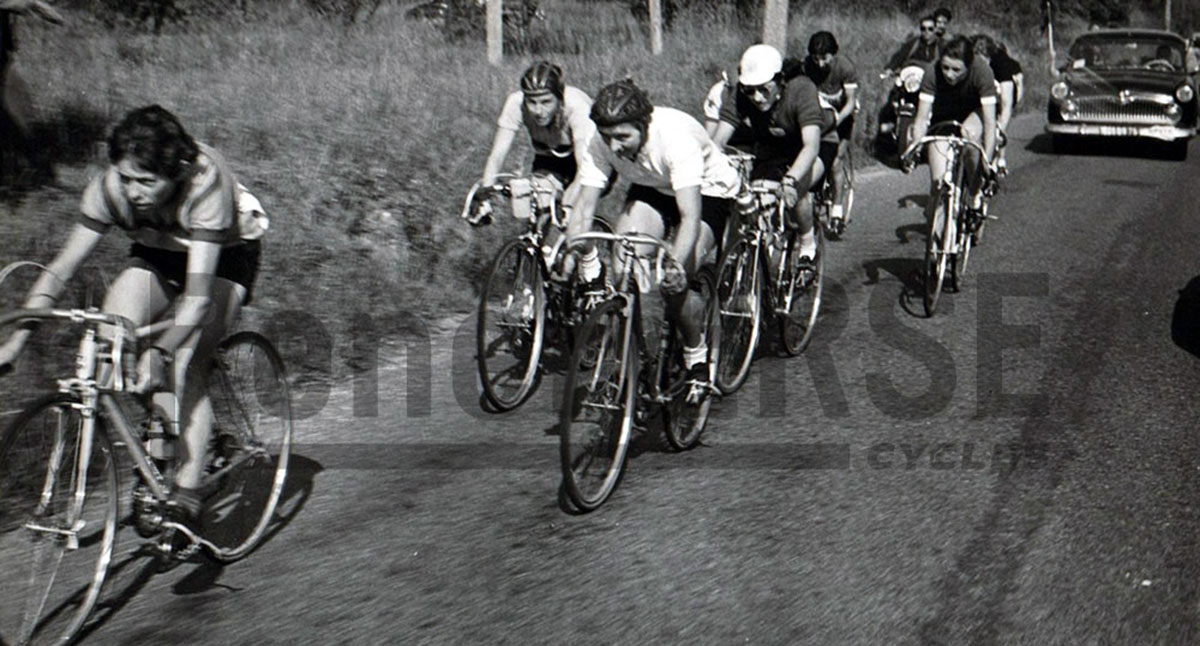The 1955 Tour de France Feminin
It’s exciting to see the Tour de France Femmes take to the roads of France this week. It’s a big step toward reducing the gender imbalance in bike racing. Most of all, there has been some great racing for all of us to enjoy.
The Tour Femmes brings back memories of the stories Lyli Herse, the daughter of our founder, told me of the first Tour de France Féminin, back in 1955. It was for this race that Lyli Herse decided to leave the world of randonneuring and become a racer. (Back then, once you had a racing license, you no longer could ride in cyclotouring and randonneur events.)
The big race was organized by Jean Leulliot, a prolific race promoter since the 1930s. During the war, he had organized cyclocross races in the city of Paris and tandem taxi races. Then he invented the prologue for the Paris-Nice race. And now his latest idea was a Tour de France Féminin.
The strongest female racers came from Britain with its long tradition of time trials. A team of British women had come to France and dominated the racing scene. Millie Robinson had just won the Circuit Lyonnais-Auvergne, the biggest race for women—winning all three stages. There was also Elsy Jacobs from Luxembourg, a strong racer who would win the very first world championships in 1958. Leulliot probably needed a French favorite to add interest to his big race, and Lyli Herse was a natural candidate.
Lyli was no stranger to competition. Randonneuring had accepted women as equals from its earliest days in the late 19th century, and Lyli had distanced many male riders when the courses turned mountainous. She told me: “Jean Leulliot was a customer of ours. One day he told me: ‘Lyli, you ride so well in these cyclotouring events, you should take out a license and race.’ And so I started racing.”

Leulliot was not disappointed: Lyli won the first stage (above on the left). Lyli wore the white leader’s jersey for the next two stages—the male Tour de France was run by a different organization, so there was no yellow jersey for the women yet. Then Milly Robinson won the fourth stage in a solo break and took over the race lead. The next stage was a time trial, Millie’s specialty. She didn’t disappoint, flying over the course at an average speed of 38 km/h (23.6 mph). That made her the race winner. June Thackeray, who had won Stage 2, was in second place. Marie-Jeanne Donabédian, winner of Stage 3, finished third.

Lyli barely missed the podium, in fourth place. It was the start of a long racing career that took her to eight French championships.
The 1955 Tour Féminin was not repeated. Leulliot was known for new ideas—his nickname was ‘Une idée par jour’ (One idea a day)—and he went on to different projects. It was only in the 1980s that the idea of a Tour de France for women was revived, this time by the organizers of the men’s Tour, as a curtain raiser for the men’s race. The first race, in 1984, was won by the American Marianne Martin. With 18 stages, the 1984 race remains the longest Tour Féminin to date. After five years, the Tour organizers dropped the women’s race. Others took over, and the female Tour continued under different names until 2009.
The world has changed. Women racers are no longer a sideshow to the men. First mountain biking and then gravel racing have created female stars that are as well-known and respected as their male counterparts. Let’s hope the Tour de France Femmes will do the same for road racing.
Further Reading:
- 50 years ago, in August 1972, Geneviève Gambillon won the world championships. She was part of the team that Lyli Herse formed after she retired from racing. Her world championship bike and the story of that race are featured in the Summer 2022 Bicycle Quarterly.
- More photos and stories of the 1955 Tour de France Féminin are in our book René Herse • The Bikes • The Builder • The Riders.



